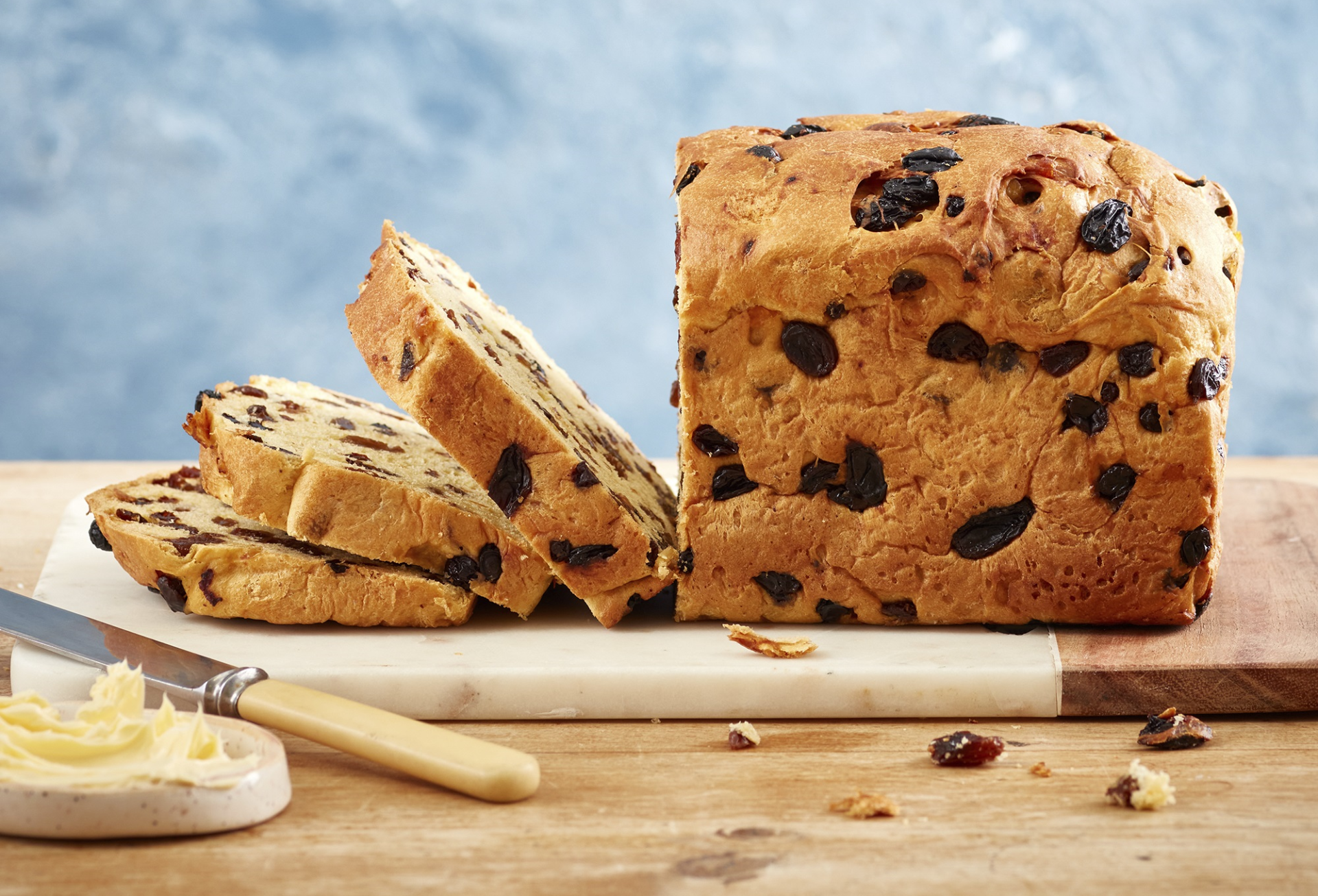One of the culinary highlights of Cornwall’s quirky list of speciality foods is saffron cake. It’s less well known than the Cornish pasty or stargazy pie, but its history is equally rich and its flavour just as exciting.
Saffron cake’s eye-catching yellow appearance is a product of its most special ingredient, which can also be used as a dye for clothes. The taste is just as distinctive; a sweet yeasted spiced fruit bread peppered with flavoursome dried fruit. The saffron provides a slightly astringent flavour that is best balanced by rich Cornish butter or clotted cream.
Ancient history
Saffron first came to Cornwall in the fourteenth century, and people have been baking cakes and buns with it since the 1800s when it became an integral part of Methodist feast days. At the end of a day of processions, games and races, child participants would be given oversized ‘tea treat buns.’
Saffron originated in southwest Asia and crept westwards during the Middle Ages, becoming a popular staple in Mediterranean cooking. But how did it find its way to Cornwall’s shores?
Many historians have speculated that the answer lies in the county’s mining industry, believing valuable tin and copper could have been exchanged with Phoenician traders for saffron spice and flower bulbs.
A flavour as rich as gold
There’s an old local saying, ‘dear as saffron,’ which remains just as true today – the spice is still more valuable than gold. The reason for the cost isn’t its distant origins but rather the sheer amount of effort it takes to produce. Come harvest time in the autumn growers must painstakingly remove the red stigma from around 180 flowers to produce a single gram.
Brian and Margaret Eyers run The Cornish Saffron Company from their farm on the Roseland Peninsula where they’ve been growing saffron’s parent plant crocus sativus since 2014. For the Eyers it is a labour of love, a mission to bring back Cornish grown saffron for the first time since the early 19th century.
Their end product is no less expensive than imported spice, but it tastes every bit as good. ‘Our saffron is very mellow but also, because of the way we process it, very full of flavour.’
The real thing
Beware of imposters bearing yellow cake. As early as 1700, the arrival of other spices and commercial dyes led to the decline in saffron use in England, except in Cornwall of course.
You’ll still find cheaper spices such as turmeric being used in its place, but there’s no mistaking the look and taste of real thing. But where can you go to ensure you’re getting authentic saffron cake?
If you’re Cornish, you’ll have your own view on who makes the best Saffron cake in the county. Padstow has numerous bakeries who have their own recipe, including The Chough Bakery which has been operating from Padstow’s quayside since 1980. A family business which has now passed on to the next generation along with their unmistakable saffron cake recipe and have won numerous awards.
Forget scones, saffron cake is arguably even more Cornish and takes pride of place in their unmissable cream tea.
